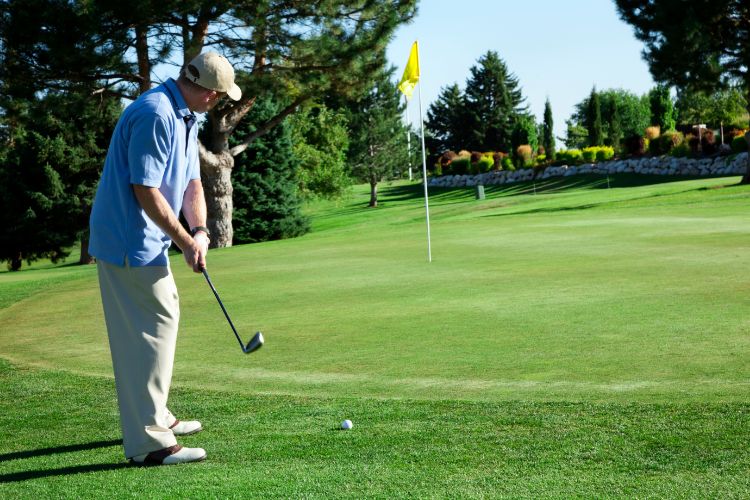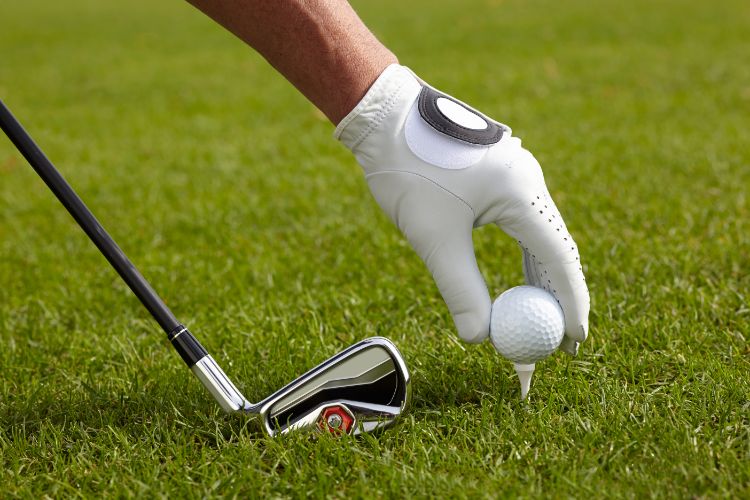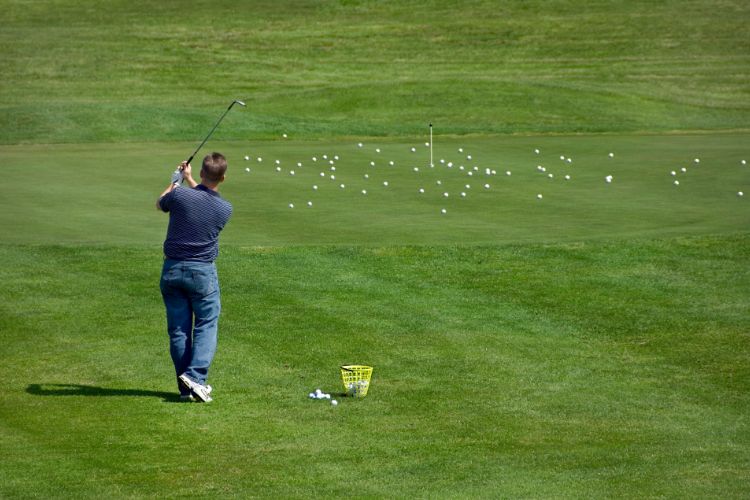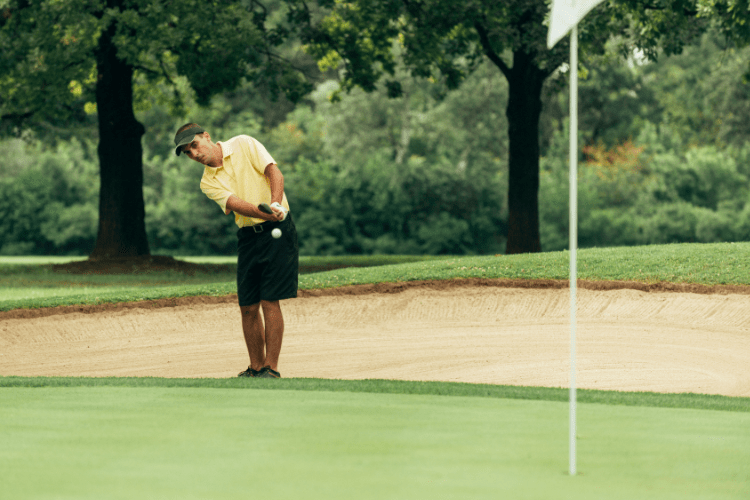What Is the Proper Way to Chip in Golf?
Posted by

Learning how to chip in golf can be tricky, but it doesn’t have to be stressful. Many golfers struggle because they choose the wrong club or overcomplicate their swing, but with the right basics, you can turn chipping into one of your biggest strengths.
Mastering chipping shots in golf lowers your score and makes the game more enjoyable. By focusing on simple strategies and practicing consistently, you’ll gain the confidence to handle those delicate short shots with ease.
Better chipping means more up-and-downs, fewer wasted strokes, and more control over your game.
If you’re ready to sharpen your skills, Skillest can connect you with golf coaches in your area who provide personalized golf lessons to help you build consistency and confidence. With their support, you’ll feel ready to tackle any shot near the green.
Understanding the Basics of Chipping

Chipping is a critical part of your short game; getting it right can make a big difference in your overall score. It’s all about getting the golf ball to fly a short distance before rolling toward the hole, but it can be tricky without the right approach.
Here are the basics to focus on:
Perfect Your Technique:
- Use a narrower stance, about shoulder-width apart, to minimize side-to-side movement.
- Lean slightly toward your target foot to ensure solid contact.
- Think of it as a compact version of your full swing, focusing on striking the ball before the ground.
Choose the Right Club:
- Higher Lofted Clubs (e.g., sand wedge) are great for slower greens or shots needing a soft landing with minimal roll.
- Lower Lofted Clubs (e.g., 8- or 9-iron) are better for faster greens or when you need an extra roll.
- Experiment with different golf clubs to see which works best for various lies and distances.
Know the Difference Between Chipping and Pitching:
- Chipping leads to lower ball flight with more roll.
- Pitching leads to ball flight that’s a bit higher with less roll.
Focus on Consistency:
- Keep your swing path direct and smooth.
- Relax your shoulders and arms for better control.
- Practice hitting the ball first to avoid chunking or thinning your shots.
Practice Mental Preparation:
- Your mind is just as important as your body!
- Stay calm and focus on your landing spot rather than perfection.
- Visualize the shot to build confidence.
Experiment and Practice:
- Decide whether you prefer using one club for all your chips or switching clubs based on the situation.
- Regular practice will help you develop muscle memory and understand how different clubs affect your shot.
Setting Up Your Stance and Posture

A solid chip starts with a good setup, which means thinking about your stance and posture. Many pros recommend a narrower stance to give you stability and focus on your target line.
Keep your feet close, about shoulder-width apart. Some golfers like to open the lead foot slightly to help with a smoother rotation during the swing.
A balanced posture helps you avoid mishits, so make sure you’re bending gently at the hips and keeping your back straight to maintain good sight lines.
Shifting about 60% of your weight to your lead foot helps you make a crisp strike. It also ensures your hands stay ahead of the ball, which is crucial for hitting the ball first. If you’re leaning back on your trailing foot, you’re more likely to chunk or thin the shot.
Ball position also plays a role in the flight of the ball. Placing it closer to your back foot results in a lower flight with more roll, while positioning it toward the middle can give you a bit more loft.
Fine-tuning your stance and posture takes time, so don’t worry if it feels awkward at first. Experiment with what feels comfortable, make consistent contact, and adjust based on the conditions or your personal preferences.
Choosing the Right Club for Chipping

The club you choose will affect the trajectory and rollout of your chip shot.
For example, using an 8-iron will create a lower flight with more roll, while a higher-lofted wedge will give you a softer landing but less roll. Your choice of club often depends on your personal preference, the type of grass, the speed of the greens, and the obstacles in your way.
Some golfers like to stick to one club for most chips, while others mix it up to handle different situations.
It’s helpful to know how far each club carries and how much it rolls. Practice on a chipping green with different clubs will give you a basic idea of what works best for you.
You might find that a 9-iron is perfect for a shorter shot that needs a lot of roll, while a lob wedge comes in handy when there’s a bunker or tall grass in front of the pin.
Comfort is key when selecting your club. Some golfers feel confident with a sand wedge because they trust the spin, while others prefer a mid-iron to reduce the risk of chunking the shot. The more you practice with different clubs, the more you’ll get a feel for what works best for various situations.
Ball Positioning Techniques

The position of the ball in your stance can change the height, spin, and rollout of your chip. Placing the ball closer to your back foot gives you a lower trajectory and more roll while positioning it in the middle of your stance adds loft and can produce a higher flight.
Experimenting with ball position is the easiest way to fine-tune your chips. By trying different positions during practice, you’ll start to see what works best for the type of shot you’re trying to hit.
As you test different ball positions, pay attention to how the club strikes the turf. If you notice a drop in contact quality, adjusting the ball position by just an inch can sometimes make a big difference.
Executing the Chip Shot
When it comes to executing the chip, the key is a smooth, controlled motion. Many golfers compare the chip shot to a putting stroke because both involve the arms and shoulders working together in a pendulum-like motion.
You want to avoid using your wrists too much—this can lead to inconsistent contact. Instead, focus on a short, controlled backswing and a smooth follow-through.
A big part of executing a chip is making sure you strike the ball first, then the turf. This ensures a clean hit, preventing fat or thin shots.
Keep your eyes on the spot where the club is about to contact the ground and maintain a steady rhythm throughout. Accelerating through the ball, even on short chips, helps keep the clubface square and avoids decelerating, which can cause all kinds of mishits.
Importance of Proper Chipping Techniques

A strong short game can make a huge difference on the scorecard and boost your confidence. Shots around the green might seem small compared to those long drives, but they often determine the outcome of your round.
Good chipping techniques help you avoid wasting shots and get the ball in a manageable putting range. A bad chip can turn a simple par attempt into a bogey—or worse.
Common Mistakes to Avoid When Chipping
Inconsistency often comes from neglecting key fundamentals.
Here are some common mistakes to watch out for in your chipping motion:
- Flipping the wrists: Trying to pop the ball up in the air by flipping your wrists often leads to thin or topped shots. Focus on keeping your wrists stable and maintaining a slight forward lean for a clean strike.
- Weight on the back foot: Placing too much weight on your back foot can cause you to strike behind the ball. Stay centered or favor your target foot (your front foot) to prevent this mistake.
- Automatic wedge selection: Reaching for a wedge without considering the lie can backfire. A wedge may not be the best option on firm surfaces or tight fairways. Practice with different lofts to find what works for your game.
- Rushing the shot: Failing to plan and rush the shot can lead to unpredictable results. Develop a routine—assess the lie, visualize a landing spot, and make a consistent stroke.
- Decelerating during the swing: Fear of overshooting can cause you to decelerate, leading to poor contact. A smooth, committed swing is key to maintaining control over distance.
- Stopping at impact: Instead of slowing down at the ball, continue your swing through it. This will help maintain better control and prevent inconsistent strikes.
- Ignoring the slope or break of the green: Even a slight slope can affect the ball’s roll. Always check the ground conditions and adjust your alignment accordingly to keep the ball on track.
Tips for Improving Your Chipping Skills

Improving your chipping involves focused practice, self-awareness, and a positive mindset. Spending time on short-game drills during each practice session helps you hone your technique and develop creativity around the green.
Observing how the ball flies, bounces, and rolls allows you to fine-tune your approach and achieve better results.
Paying attention to patterns in your performance is crucial. If your chips often come up short or roll out too far, it could point to issues with loft, contact, or alignment.
Recording your swing or keeping a practice journal can help identify areas for improvement and guide your practice more effectively.
Mental focus plays a big role in chipping success. Instead of fixating on the hole, visualize a specific landing spot on the green. This mental shift helps you stay relaxed and confident, leading to better execution.
Adapting to different lies, like tight turf, thick rough, or sloped surfaces, builds your confidence in challenging situations. Practicing these variations prepares you to adjust your stance, ball position, and club choice naturally during a round.
For personalized guidance, Skillest offers access to professional coaches who can provide expert feedback and customized drills to sharpen your skills. Combining consistent practice with expert advice ensures steady improvement and greater confidence around the green.
Practice Drills for Better Chipping

Structured practice sessions can help you fine-tune your chipping skills.
- One effective drill is setting up a target landing zone on the green, like a towel or marker, and focusing on landing the ball on that spot. Afterward, track how far the ball rolls to improve your distance control.
- Another drill involves using just one club for all your chips. By adjusting your landing zone rather than changing clubs, you can focus on refining your technique and consistency.
- Ladder drills are another great way to improve your chipping. Set up multiple targets at increasing distances and chip to them one by one. This helps you develop a feel for both carry and roll. You can also mix up clubs within this drill to understand how different lofts impact your distances, giving you valuable insights for on-course decision-making.
How to Adjust for Different Course Conditions
The conditions on the course can change your approach to chipping. When you’re playing on wet turf, you might need a steeper angle to make good contact. On firmer ground, a shallower sweep will work better.
When you’re faced with greens that have grain, it’s essential to read the direction of the grass, as this can affect how far the ball rolls or whether it stops too soon.
Uphill and downhill chips behave differently, too. An uphill chip typically stops faster, while a downhill chip rolls out longer.
By reading the slope, you can adjust your landing area accordingly. If you have an uphill lie, a lower loft will help, and for slick, downhill shots, a higher loft can make a difference.
Taking time to observe the course conditions during warm-up can also give you a better understanding of how the ball will behave during your round. A quick practice session on the green can reveal a lot about how chips will roll, giving you the confidence to make smarter choices during play.
Turn Chipping into Your Greatest Strength

Mastering your chipping can significantly improve your game and lower your scores. By focusing on the basics, you’ll achieve more consistent contact, giving each chip a better chance of landing near the hole.
A steady technique also reduces stress on challenging lies, making the game more enjoyable. Chipping often saves the day, especially when other parts of your game aren’t working.
To improve, you can track data or start with one club, experimenting with ball position, stance, and loft. Both methods are effective. The key is staying calm and trusting your short-game skills.
Minor adjustments can lead to big improvements, and as your confidence grows, your overall performance will improve. A strong chipping game allows you to take more aggressive shots and attack pins.
If you want to speed up your progress, Skillest connects you with professional coaches who can tailor lessons to your needs, helping you make meaningful strides in your game.
Frequently Asked Questions (FAQs):
What is the best way to practice chipping?
Focus on drills that help with consistent contact and distance control. Simple exercises, like landing the ball on a towel or using just one club for all your chips, will help build predictability.
Keeping track of your results helps you adjust your practice routine and improve over time.
How important is club selection in chipping?
Choosing the right club is key to a proper chip shot. Each club has its own loft and bounce, which affects how quickly the ball gets airborne and how it rolls after hitting the ground.
Understanding the strengths and tendencies of each club helps you make smart decisions based on the turf, green speed, and what you’re trying to achieve with the shot.
How can a golfer improve chipping technique?
The key is steady progress. Focus on maintaining a solid stance, good posture, and a controlled swing that contacts the ball before the turf.
Recording your practice sessions or getting feedback from a coach can help you identify any small flaws in your technique. Practicing with different lies also builds the adaptability you need for real course situations.
